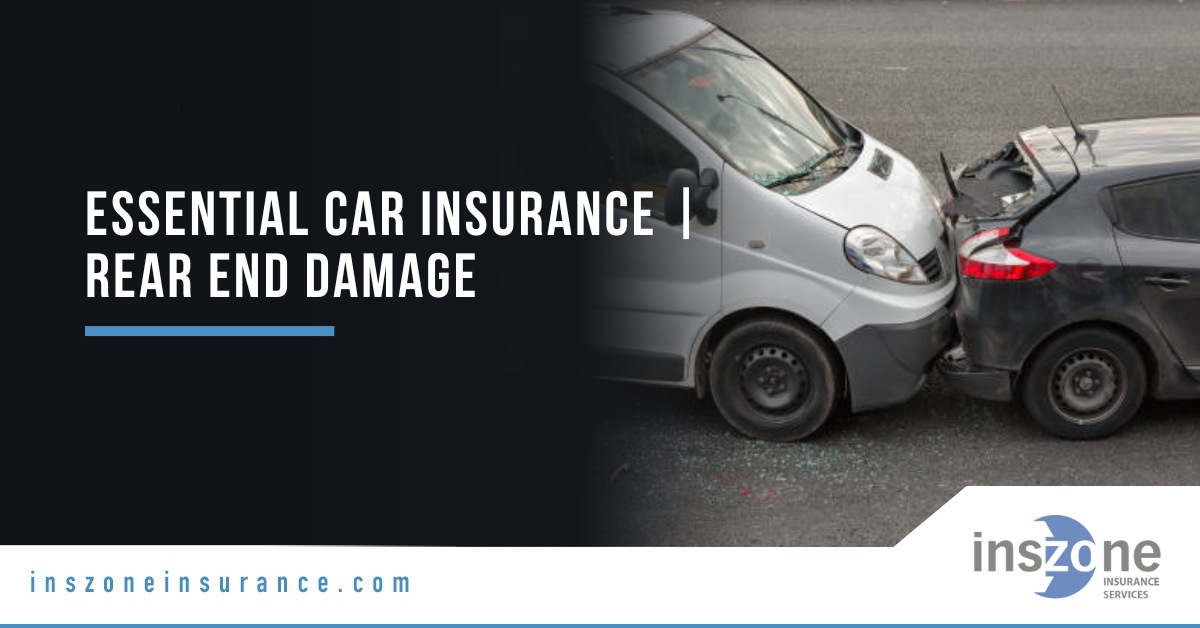A rear-end collision can happen in an instant — a sudden stop, a distracted driver, or an unexpected road hazard. While these accidents are among the most common on U.S. roads, many drivers still feel uncertain about what happens next: Who’s at fault? Whose insurance pays? And what if the other driver isn’t insured at all?
This guide breaks down what to do after a rear-end accident, how insurance covers the damage, and what your next steps should be to protect yourself and your vehicle.
What Causes Rear-End Collisions
Rear-end crashes often occur when the following driver doesn’t have enough time or space to stop. Common causes include:
- Following too closely (“tailgating”)
- Distracted driving (texting or eating)
- Sudden braking by the front vehicle
- Poor weather conditions reducing visibility or traction
- Speeding or aggressive driving
Even at low speeds, these accidents can cause costly vehicle damage and painful neck or back injuries.
What To Do Immediately After a Rear-End Accident
Safety and documentation are your top priorities.
- Move to a safe location if possible.
- Check for injuries and call 911 if anyone is hurt.
- Exchange information with the other driver, including insurance, license, and contact details.
- Take photos of both vehicles, the road, and any visible damage.
- Notify your insurance company as soon as possible.
Reporting the accident promptly helps protect your ability to file a claim and ensures your version of events is on record.
Who’s at Fault in a Rear-End Collision
In most cases, the driver who hits the car in front is considered at fault. Traffic laws generally require maintaining a safe following distance, regardless of sudden stops or traffic flow.
However, there are exceptions — such as if the lead driver reversed suddenly or braked unexpectedly without reason. Insurance adjusters review police reports, photos, and witness statements to determine liability.
How Insurance Covers Rear-End Damage
If another driver rear-ends your vehicle, their liability insurance should pay for both your car repairs and any medical bills, up to their policy limits. But if they’re uninsured or underinsured, you may need to rely on your own coverage.
Property Damage
- At-fault driver’s property damage liability: Pays for repairs to your car, typically up to their limit (often $5,000–$10,000 in basic policies).
- Your collision coverage: Covers your vehicle repairs regardless of fault, minus your deductible.
- Uninsured/Underinsured Motorist Property Damage (UMPD): Applies if the at-fault driver has no insurance or insufficient limits. Most states cap this at around $3,500–$5,000.
If repairs exceed these limits, your insurer may attempt to recover the remaining costs from the at-fault driver (a process called subrogation).
Injuries and Medical Bills
Rear-end collisions are notorious for causing whiplash, neck strain, and back injuries. Even low-speed impacts can result in costly treatment or ongoing discomfort.
- Bodily Injury Liability (the other driver): Pays your medical expenses if they’re at fault.
- Personal Injury Protection (PIP) or MedPay (yours): Covers your medical bills regardless of fault, depending on your state.
- Uninsured/Underinsured Motorist Bodily Injury: Protects you if the other driver lacks sufficient coverage.
Medical claims from minor rear-end injuries often range from $2,500 to $10,000 or more, depending on treatment and recovery time.
Should You File a Claim After a Rear-End Accident?
Yes — even if the damage looks minor. What seems like a scratched bumper may hide structural or alignment damage that costs thousands to repair later.
File a claim with your insurer, even if you believe the other driver’s insurance will pay. This helps you:
- Protect against the other driver denying fault.
- Establish documentation in case hidden injuries appear later.
- Ensure timely vehicle repairs while insurers determine liability.
Your insurance company will handle communication with the other driver’s insurer and pursue reimbursement if appropriate.
Common Insurance Gaps to Watch Out For
Many drivers don’t realize that state minimum coverage limits often fall short of real-world repair costs. For example, California’s property damage requirement is only $5,000, which wouldn’t cover most modern vehicles after a rear-end crash.
Review your policy to ensure you have:
- Adequate collision coverage if you rely on your car daily.
- Sufficient uninsured/underinsured motorist protection to handle serious injuries or total loss claims.
- Realistic deductibles that you can afford in the event of a claim.
How to Prevent Rear-End Accidents
While you can’t control other drivers, you can reduce your risk:
- Leave at least three seconds of following distance.
- Avoid distractions like texting or eating.
- Keep your brakes and tires well-maintained.
- Anticipate traffic patterns ahead.
- Stay visible by keeping your tail lights clean and functional.
These habits not only reduce accident risk but may also qualify you for safe-driver discounts on your insurance.
Rear-end collisions are stressful, but your insurance can help you recover quickly if you know what coverage applies. From medical expenses to vehicle repairs, the right policy keeps you protected from unexpected costs — even when the other driver isn’t adequately insured.
If you’ve recently been in an accident or simply want to ensure your coverage fits your needs, Inszone Insurance can help. Our team will review your policy, explain your options, and make sure you’re fully protected against future incidents.
Contact Inszone Insurance today at (877) 308-9663 or visit inszoneinsurance.com to get started.





